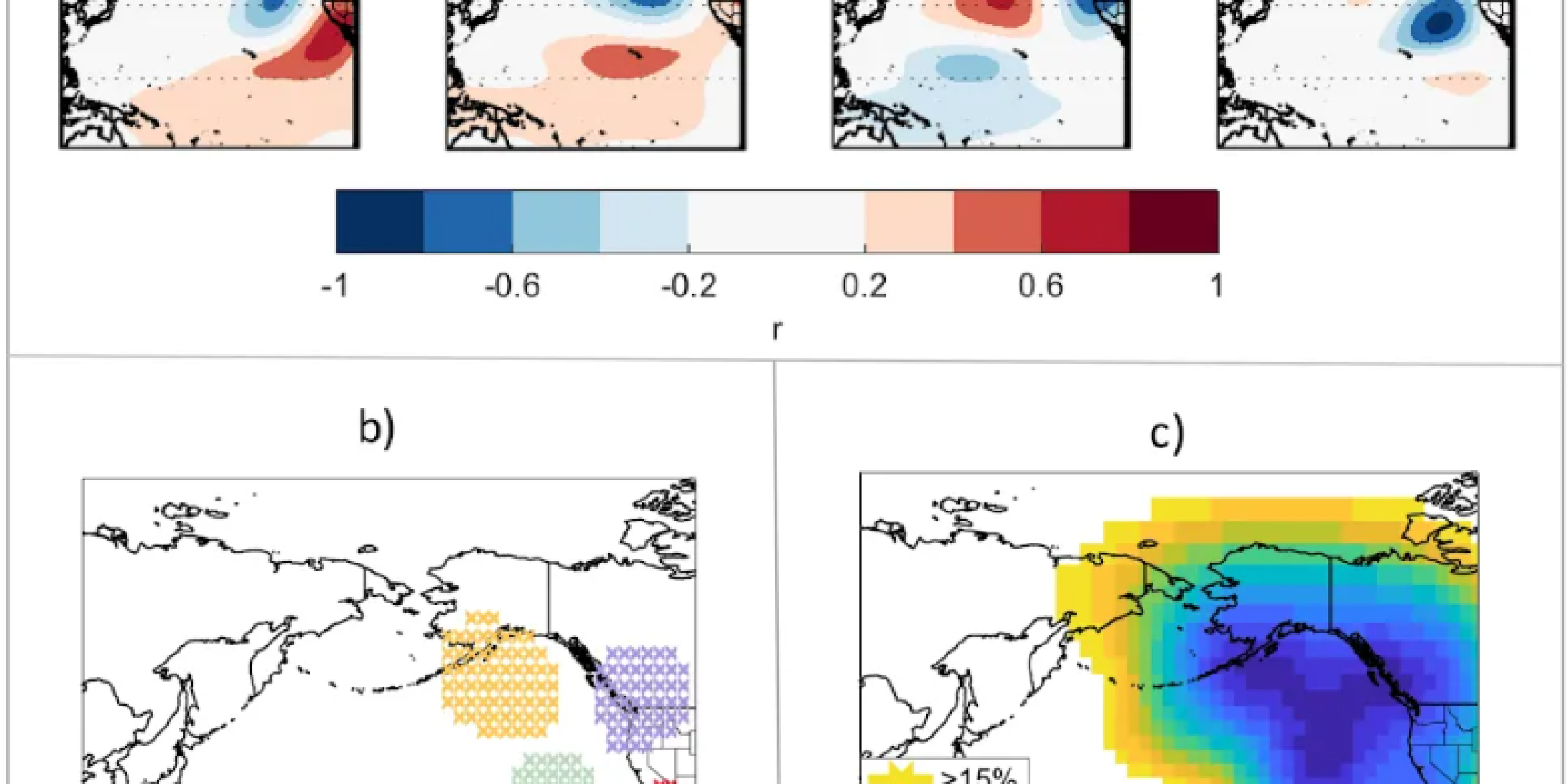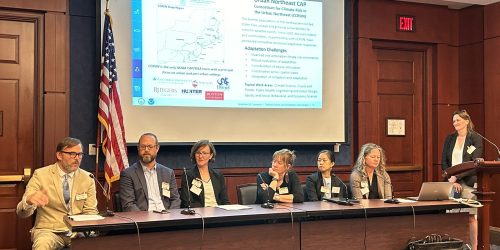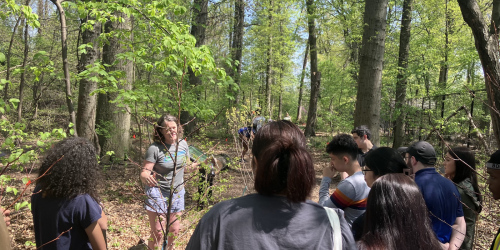Researchers Alexander Gershunov and Thomas Corringham from the California-Nevada Climate Applications Program (CNAP), a NOAA RISA team, recently contributed to an article published in the journal of Climate Dynamics. In the article titled “Winter wet–dry weather patterns driving atmospheric rivers and Santa Ana winds provide evidence for increasing wildfire hazard in California” the authors show that winter weather variability in California, including the occurrence of extreme and impactful events, is linked to four atmospheric circulation regimes over the North Pacific Ocean previously named and identified as the “NP4 modes”. These modes come in and out of phase with each other during the season, resulting in distinct weather patterns that recur throughout the historical record. Some phase combinations favor atmospheric river landfalls and extreme daily or multi-day precipitation, while other phase combinations favor anomalously hot weather and drying Santa Ana wind conditions over Southern California. This historical perspective of atmospheric circulation and impacts over 70 years reveals that weather patterns are changing in a way that enhances wildfire hazard in California, while the frequency of weather patterns linked to historical floods is not diminishing. These changes highlight the rising hazards of cascading weather extremes in California’s present and future.
This research was funded by the U.S. Department of the Interior via the Bureau of Reclamation, the California Department of Water Resources, and by NOAA’s Regional Integrated Sciences and Assessments (RISA) California–Nevada Climate Applications Program (CNAP) and the International Research Applications Program (IRAP). This study also contributes to DOI’s Southwest Climate Adaptation Science Center activities.
For more information, contact Genie Bey.









